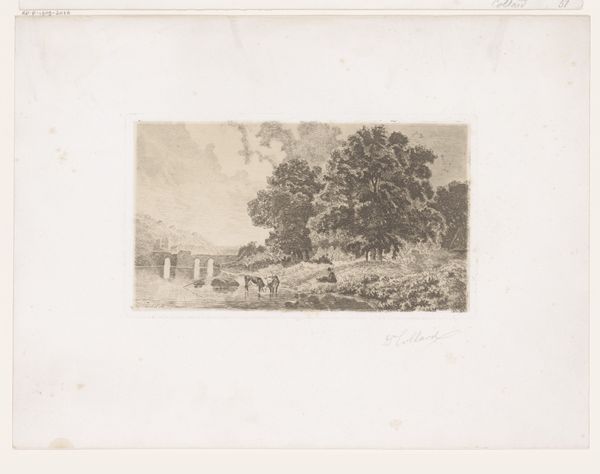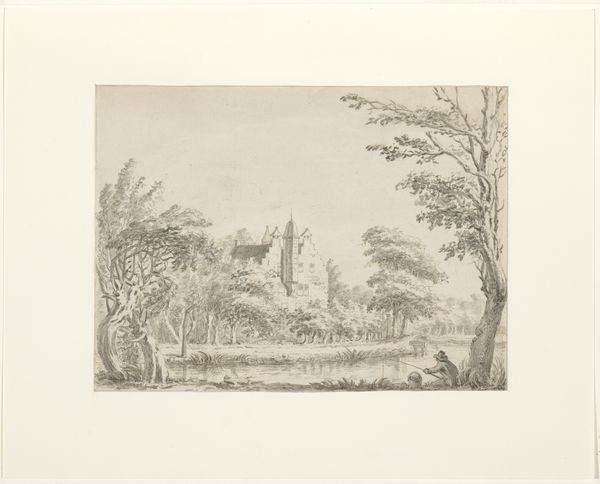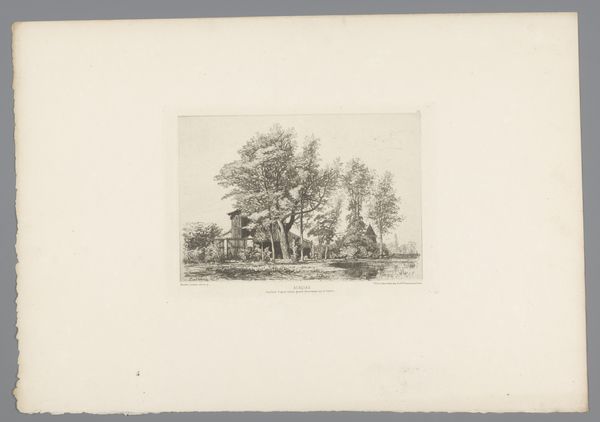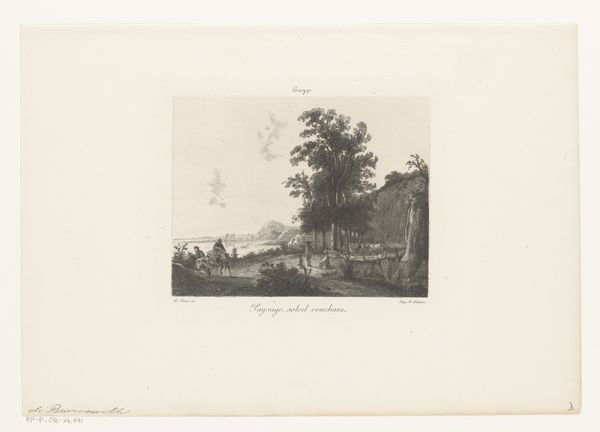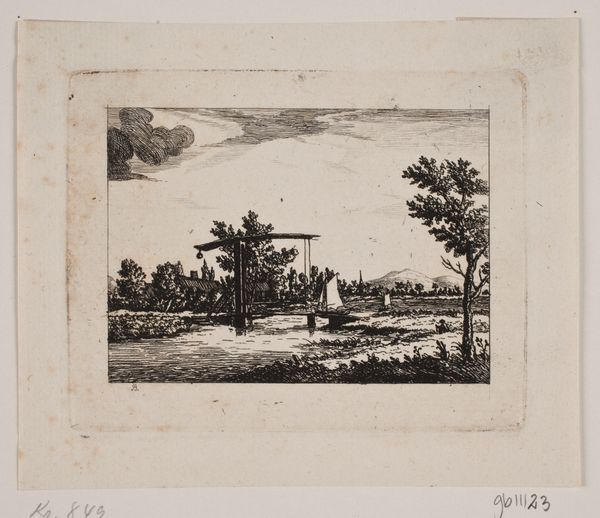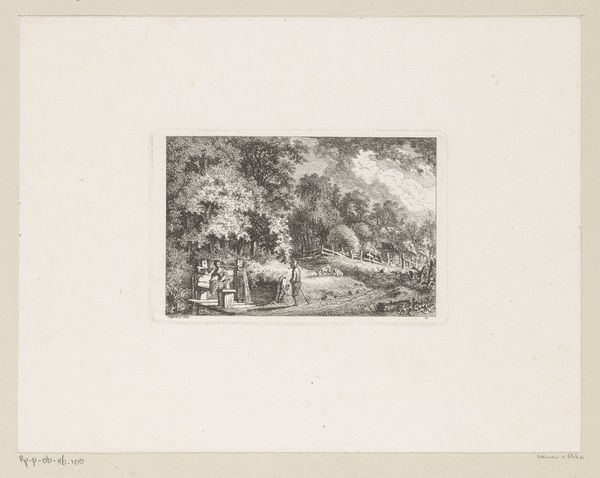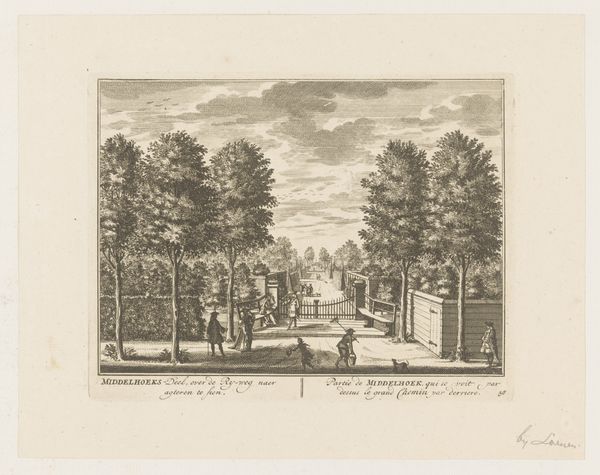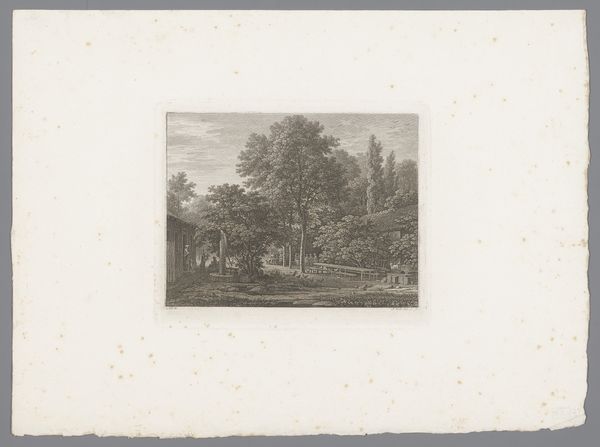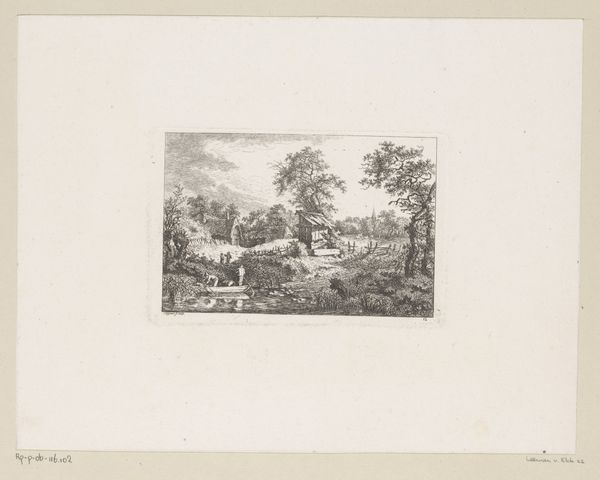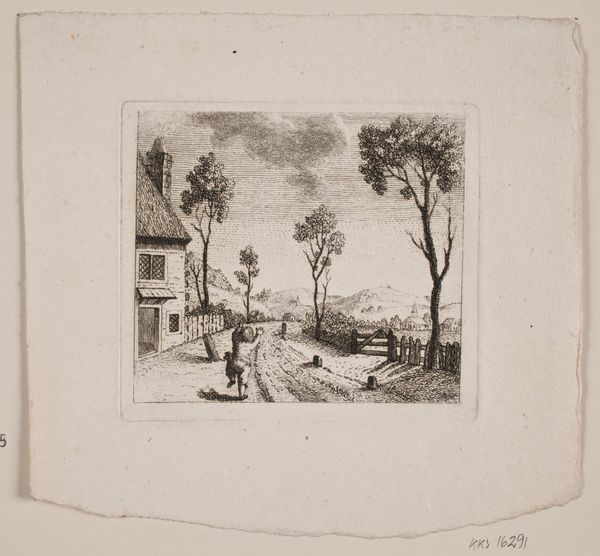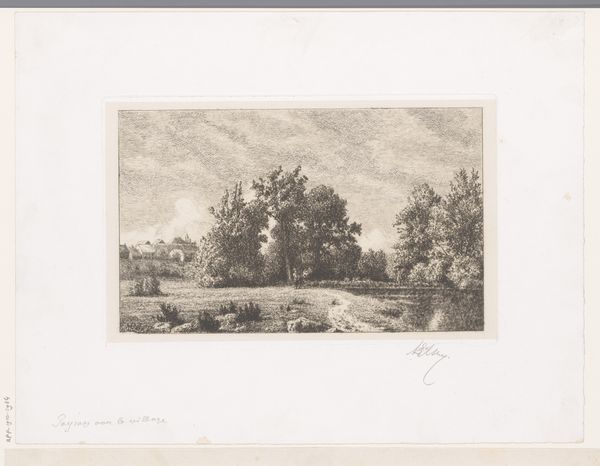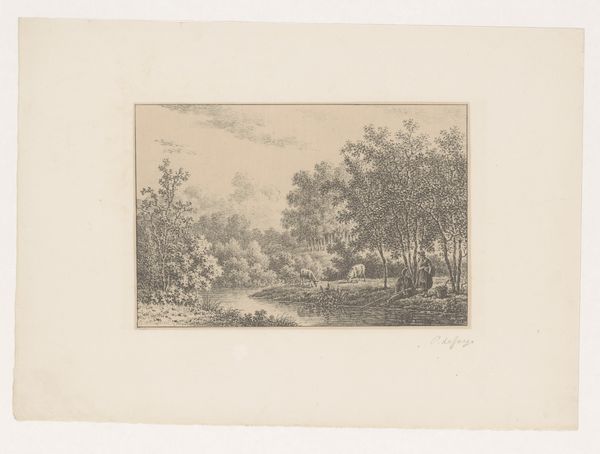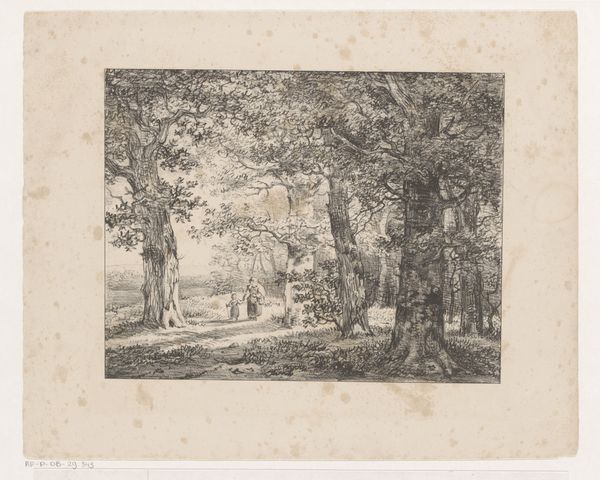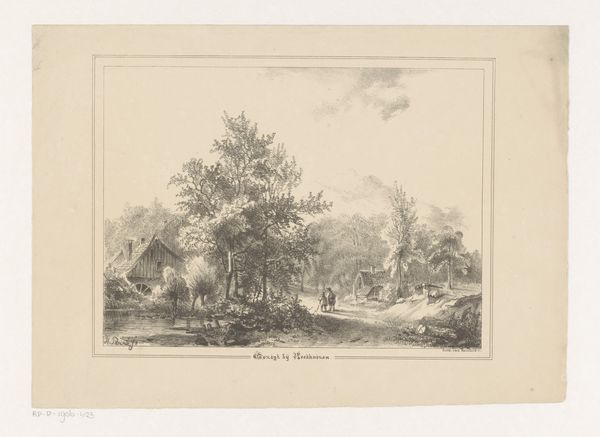
print, etching, engraving
#
aged paper
#
light pencil work
#
narrative-art
#
dutch-golden-age
# print
#
etching
#
pencil sketch
#
old engraving style
#
landscape
#
etching
#
figuration
#
form
#
personal sketchbook
#
sketchwork
#
line
#
sketchbook drawing
#
cityscape
#
pencil work
#
history-painting
#
sketchbook art
#
engraving
#
realism
Dimensions: height 194 mm, width 222 mm
Copyright: Rijks Museum: Open Domain
Editor: This etching from 1787, titled "Verovering van de Kattenburgerbrug," presumably by Willem Kok, shows a dynamic scene with lots of figures. I’m struck by how much movement is captured in such a seemingly simple monochromatic print. How would you interpret this work? Curator: Let’s begin by looking at the formal structure. Notice the composition is divided into distinct horizontal bands: the turbulent foreground with figures, the static bridge, and then a receding background with architecture and smoke. Editor: Yes, the layering creates a real sense of depth. Curator: Precisely. And consider the artist’s use of line. Notice the energetic, almost frantic, linework in the foreground figures, compared to the more controlled lines defining the architectural elements. Editor: It’s as if the line itself is enacting the chaos of the scene. The sky and water appear far softer in contrast, what do you notice there? Curator: Observe how the artist manipulates light and shadow, even in this limited palette. The darker tones emphasize the chaos and confusion near the bridge, drawing the eye to the focal point of action, the push and pull. We may note the artist is using different hatching techniques, as well, do you observe that? Editor: Yes, that seems important, but how does the style affect its meaning? Curator: The linear precision of the etching medium allows for intricate detail. Also notice the engraver chose to outline the clouds in a highly unusual approach. The form becomes content, directing our gaze and influencing our perception of the event. This is not only informative but interpretive through the lens of its construction. Editor: I see what you mean! By analyzing the lines, the composition, and the use of light and shadow, we can understand the artwork’s aesthetic choices more clearly, beyond the literal representation of the event. Curator: Exactly. By focusing on the formal elements, we uncover a deeper appreciation of how the artist shapes our understanding. Editor: This focus on form really reframes how I see the image!
Comments
No comments
Be the first to comment and join the conversation on the ultimate creative platform.
